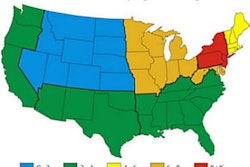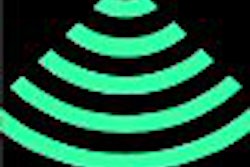Cardiac Imaging: The Requisites by Stephen Wilmot Miller, 2nd edition
ElsevierScience, St. Louis, 2004, $99
Diagnosing the underlying causes of heart disease is one of the most important goals of modern medicine, and cardiac imaging plays a vital role in that arena. As a result, a text that effectively combines anatomy and classic plain-film interpretation, with newer modalities such as nuclear medicine perfusion studies, CT coronary angiography, and cardiac MRI, is desperately needed. Unfortunately, the second edition of Cardiac Imaging: The Requisites is not that book.
As with its predecessor, Cardiac Imaging is logically organized in two parts. Part one focuses on imaging with chapters on plain-film, echocardiography, cardiac MRI, and cardiac angiography. Part two covers specific disease types and is divided into valvular, ischemic, congenital, thoracic aortic, pericardial and myocardial disease. A chapter from the first edition on interventional cardiology has been eliminated.
A highlight of this book is the discussion of plain-film cardiac anatomy, with an emphasis on chamber enlargement, cardiac calcification, and pulmonary vasculature. This section remains clear and comprehensive.
The chapter on cardiac MRI has been significantly improved, focusing on the modality's usefulness in valvular disease, congenital heart disease, ischemic disease, and pericardial imaging. This chapter is up-to-date and references recent articles and books on this expanding technique.
Unfortunately, the book's strengths cannot outweigh its weaknesses. Many of the radiographs are largely unchanged from the first edition and, subsequently, are quite old. Newer images and improved resolution would have enhanced the material. This is particularly true in the echocardiographic section that is extremely dated.
Many of these older images suffer from degraded contrast and resolution. All the color images are inconveniently bunched into the front of the book.
Finally, several important topics have been neglected, such as CT and risk stratification for coronary artery calcium; nuclear medicine myocardial perfusion imaging; and non-invasive coronary imaging (there is nothing on CT or MR angiography). Nuclear medicine perfusion imaging in particular deserves some discussion if cardiac imaging is to be thoroughly covered. For more complete reviews of cardiac imaging, I recommend the following two articles:
- Schoenhagen P, Halliburton S, Stillman A, Kuzmiak S, Nissen S, Tuzcu E, White R, "Noninvasive Imaging of Coronary Arteries: Current and Future Role of Multi-Detector Row CT," Radiology, July 2004, Vol.232:1, pp. 7-17.
- Schoepf U, Becker C, Ohnesorge B, Yucel E, "CT of Coronary Artery Disease," Radiology, July 2004, Vol.232:1, pp. 18-37.
Imaging of the heart is currently undergoing a revolution. Radiologists must be comfortable with cardiac anatomy and classic plain-film interpretation, which this text covers adequately. However, we must also understand newer techniques, which are rapidly gaining validation, robustness, and widespread acceptance by clinicians.
By Dr. Danny DonovanAuntMinnie.com contributing writer
January 20, 2005
Dr. Danny Donovan is a fourth-year resident in diagnostic radiology at the University of Tennessee/Methodist University Hospital in Memphis. He has accepted a fellowship in cardiovascular imaging at Stanford University in Stanford, CA.
The opinions expressed in this review are those of the author, and do not necessarily reflect the views of AuntMinnie.com.
Copyright © 2005 AuntMinnie.com



















